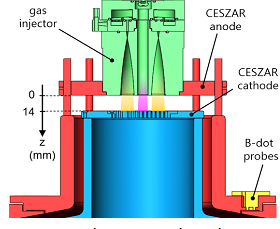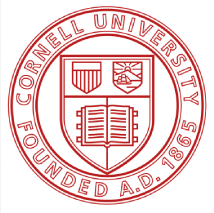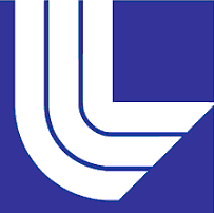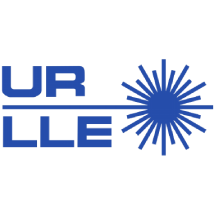In the challenging quest to unlock controlled thermonuclear fusion, companies worldwide face three formidable hurdles: Heating, Stability, and Confinement. Magneto-Inertial Fusion Technologies, Inc. (MIFTI) stands at the forefront of this endeavor, having developed an efficient and cost-effective solution to these challenges, bringing us closer to realizing the dream of Controlled Thermonuclear Fusion.
Our pioneering approach, magneto-inertial fusion (MIF) Staged Z-Pinch (SZP) concept, represents a significant leap forward in fusion technology. It involves using a liner with a higher atomic number to compress a fusible target. This process initiates shock preheating of the target plasma to approximately 100 eV, while compression of the magnetic field (Bɵ) at the liner/target interface near stagnation time generates an extraordinarily high magnetic field (103 – 104 T). This magnetic field effectively “freezes” electrons along the Bɵ lines, leading to mass accumulation and robust adiabatic compression.
MIF synergistically combines the best features of Magnetic Confinement Fusion (MCF) and Inertial Confinement Fusion (ICF), making fusion energy not only easier to demonstrate but also significantly more cost-effective than other approaches. Our MIF technology ensures that the core plasma remains stable until peak implosion, surrounded by a strong magnetic field that retains alpha particles. This results in the ignition of the core plasma and a net gain in fusion energy.

Our recent experiments, notably the thermonuclear fusion milestone of over 10 billion neutrons (10¹⁰) generated on the 1 MA (mega ampere) Zebra device at UNR/NTF, demonstrate our technological prowess – a feat unmatched by any private entity globally. This success is a testament to the effectiveness of our Staged Z-Pinch (SZP) concept.
Key experimental parameters, closely aligning with predictions from 2D MACH2 simulations, include:
Implosion time (B-dot probe measurements)
Implosion velocity (Streak image analysis)
Plasma Temperature (NTOF detector readings)
Minimum radius (XUV image capture)
Lawson’s Triple product n.T.t ≈ 10¹⁹ (Kev.s.m³)
Led by President and Chief Scientist Dr. Hafiz Rahman, our team utilizes sophisticated computer modeling platforms, including the U.S. Airforce MACH2 code, Hydra code from Lawrence Livermore National Laboratory and FLASH code from University Of Rochester. These models predict that applying our SZP technology to a 15MA machine could achieve engineering breakeven or net gain (Never Achieved Before)

Our journey has been marked by significant advancements in thermonuclear fusion technology, developed through years of collaborative research on university-held experimental machines. We are now poised to construct a 15MA device, advancing towards breakeven and beyond.
Our SZP technology stands out for its simplicity and cost-effectiveness, requiring a modest budget compared to other less viable fusion ventures. The LTDX-10 machine, an upgrade of the LTD-III, exemplifies our commitment to high flux neutron production. This machine, capable of delivering 3 TW of power and producing peak load currents of 9 MA, is integral to our research and development.
Sustainability: Using hydrogen isotopes from seawater
Environmental friendliness: No long-term radioactive waste
Independence: Not reliant on variable natural resources
Scalability: Customizable to diverse application needs
Decentralization: Suitable for small-grid installations
Cost-effectiveness: Unmatched in power generation
With our path-breaking MIFGEN plant, utilizing our patented SZP technology, MIFTI is setting the stage for commercial-scale power plants within the next 5 – 7 years. A successful MIF demonstration in a SZP configuration will not only revolutionize the energy sector but also pave the way for a cleaner, more sustainable future.



Magnetosonic (MS) and ion acoustic shock waves are produced in the liner plasma during pinch implosion. Their timing and effect are governed by interplay of coupled parameters: the mass distributions, the liner acceleration, the material-atomic numbers, the degree of ionization, and the presence of intense-magnetic fields. When a high-atomic-number liner and low-atomic- number target are used, MS shocks transport discharge current and magnetic field into the liner interior, at a rate much faster than classical diffusion. The result is a stable, high-density, shock-front discontinuity, at the liner-target interface, that propagates ahead of the slower-moving, unstable liner. Ion acoustic shock waves that penetrate into the target plasma and provide an additional source of target pre-heat and ultimately contribute to the adiabatic compressional heating. Near peak compression, current amplification occurs near the interface, due to flux-compression, that allows the target to compress inertially and adiabatically. The intense-magnetic fields that develop at the interface, confine the fusion products, and may lead to ignition for higher current machines.

Gerald Simmons, our Executive Chairman and CEO, brings a wealth of experience from the high-tech sector. As the former President of MOS International, he led a team developing cutting-edge hardware and software solutions, spearheading initiatives across manufacturing, product development, and marketing. His leadership was pivotal in achieving profitability and sustainable growth.
Simmons’ entrepreneurial spirit shone through as an early investor in Immune Response, a venture by Dr. Jonas Salk, the renowned polio vaccine discoverer. His investment acumen extends to various successful start-ups, including Data Pac Systems and Stamps.Com, guiding them from inception to IPOs or sales. With a knack for strategic partnerships, he has worked with tech giants like IBM, Sony Corp., and Hewlett Packard, and co-founded Tri-Alpha Energy, contributing significantly to its early funding and growth.
Dr. Hafiz Ur Rahman, our President and Chief Scientist, is a distinguished figure in plasma physics with over three decades of expertise in fusion energy and space physics. His prolific career spans teaching, research, and leadership roles in both industry and academia.
His research, covering experimental, theoretical, and computational physics, has significantly advanced our understanding of dense Z pinches, space plasma structures, and plasma beam propagation. As the director of the Space Simulation Laboratory at IGPP, he led numerous projects funded by NASA, NSF, US Air Force, DOE, and NRL. His work on staged Z-pinch research has been particularly influential. Dr. Rahman’s academic credentials are impressive, with a Ph.D. in physics under the prestigious DAAD scholarship program. His contributions to the field are reflected in over 70 published papers and multiple patents.MIF synergistically combines the best features of Magnetic Confinement Fusion (MCF) and Inertial Confinement Fusion (ICF), making fusion energy not only easier to demonstrate but also significantly more cost-effective than other approaches. Our MIF technology ensures that the core plasma remains stable until peak implosion, surrounded by a strong magnetic field that retains alpha particles. This results in the ignition of the core plasma and a net gain in fusion energy.
Arshad Mohammad, our COO and CFO, is a strategic leader with over 30 years of experience in the Retail and High-tech industries. His ability to leverage executive networks and bring innovative solutions to the global market is unparalleled.
Before joining MIFTI, Mohammad led GTT International, Inc., significantly boosting its revenue growth. His strategic planning and operational expertise have been instrumental in introducing groundbreaking products in major retail stores like Macy’s and Target.
Mohammad’s educational background includes an MBA in International Business from Florida International University and an MBA in Management Information Systems from Quaid-I-Azam University, complemented by a B.S. in Accounting.
Together, our management team combines a unique blend of technical expertise, business acumen, and visionary leadership. We are committed to leading MIFTI towards groundbreaking achievements in thermonuclear fusion, setting new standards in sustainable and clean energy production. Our team’s diverse skills and experience are the driving force behind our mission to transform the energy landscape.
At Magneto-Inertial Fusion Technologies, Inc. (MIFTI), we stand at the precipice of a new era in energy production. Having established scientific proof of principle across multiple machines, our path forward is clear and compelling: to bring our revolutionary fusion technology to the global market. Here, we outline our strategic timeline from our current achievements to full-scale commercialization.
Our journey began with groundbreaking scientific achievements. In collaboration with the University of Nevada, Reno National Terawatt Facility (UNR/NTF) and the University of California, San Diego Nuclear Reactor Facility (UCSD/NRF), we successfully completed the proof of concept phase. This milestone marks a pivotal moment in our quest for sustainable fusion energy.
Upon demonstrating scientific breakeven, we will embark on an intensive scientific feasibility study. This phase involves detailed engineering and commercialization studies, exploring the vast potential of fusion energy applications. Parallel to this, MIFTI plans to conduct experiments on the 4 MA device at L3 Harris in San Leandro, showcasing our technology’s scalability and robustness.
Our ultimate goal is to design and develop a 15 MA machine capable of Net Energy Gain (ignition). Achieving this milestone will position MIFTI as the first company globally to reach this long-sought goal in fusion energy. It’s not just an ambition; it’s a vision we’re turning into reality.
In our final stride towards commercialization, MIFTI is collaborating with industry leader Bechtel. Together, we’re developing a preliminary design for our grid-ready MIFGEN Nuclear Fusion Power Plant. This plant symbolizes the culmination of our efforts – a fusion power solution ready to transform the global energy landscape.

Our path to commercialization is not just a roadmap for our company; it represents a journey towards a brighter, cleaner, and more sustainable future for our planet. With each milestone, we move closer to harnessing the power of the stars, promising a boundless energy source for generations to come.

At Magneto-Inertial Fusion Technologies, Inc. (MIFTI), our journey in pioneering fusion technology has been marked by significant recognition and accolades. These awards are a testament to our dedication, innovation, and leadership in the field of nuclear fusion energy. Here, we proudly showcase some of the prestigious honors that illuminate our path of excellence.
MIFTI is honored to be one of only three private companies nationwide to receive the DOE/ARPA-E Alpha Fusion Program Award. This prestigious award is a nod to our innovative approach and significant contributions to fusion technology. It underscores our commitment to developing sustainable and efficient energy solutions, aligning with the Department of Energy’s vision for a cleaner energy future.
Our groundbreaking work has also been recognized with the DOE/INFUSE Program Award. This accolade highlights our collaborative efforts and technological advancements in fusion energy. Receiving this award from the Department of Energy’s Innovation Network for Fusion Energy program is a significant milestone, reflecting our pioneering research and development in the fusion field.
In 2016, MIFTI’s relentless pursuit of excellence in engineering and technology was celebrated with the Orange County Engineering Council’s Project of the Year Award. This recognition is a tribute to our team’s hard work, ingenuity, and persistent efforts in advancing the frontiers of fusion technology.
These awards are more than just accolades; they represent the international recognition of MIFTI’s role as a leader in the field of thermonuclear fusion. Each award is a chapter in our ongoing story of innovation, a story we are proud to share with the world.
At Magneto-Inertial Fusion Technologies, Inc. (MIFTI), our journey towards realizing the potential of fusion energy is bolstered by robust partnerships with premier institutions. Together, we form a nexus of innovation, research, and technological prowess on our mission to harness the power of nuclear fusion. Here are our esteemed collaborators, each playing a pivotal role in the Staged Z-pinch project:





Our collaborative work with UCSD’s Nuclear Reactor Facility is vital in advancing our understanding of fusion processes, contributing to both experimental breakthroughs and theoretical insights.
At UNR’s National Terawatt Facility, we have achieved significant milestones in neutron generation, a testament to our shared commitment to pioneering energy solutions.
Cornell University, Ithaca, NY: Cornell’s legacy of excellence in physics and engineering provides a fertile ground for collaborative research, furthering our experimental and computational endeavors.
Our partnership with LLNL, a leader in scientific research, is instrumental in advancing the computational modeling that underpins our fusion energy research.
Laboratory for Laser Energetics, University of Rochester: Collaborating with this leading laboratory enhances our capabilities in laser-driven fusion research, an area critical to our Staged Z-pinch development.
These institutions not only lend their esteemed reputations to our project but also provide invaluable expertise and resources that accelerate our progress. Each collaborator is an integral part of our path forward, from conceptualization to commercialization. We are united by a shared vision: to make fusion energy a reality, and in doing so, to pave the way for a sustainable energy future.